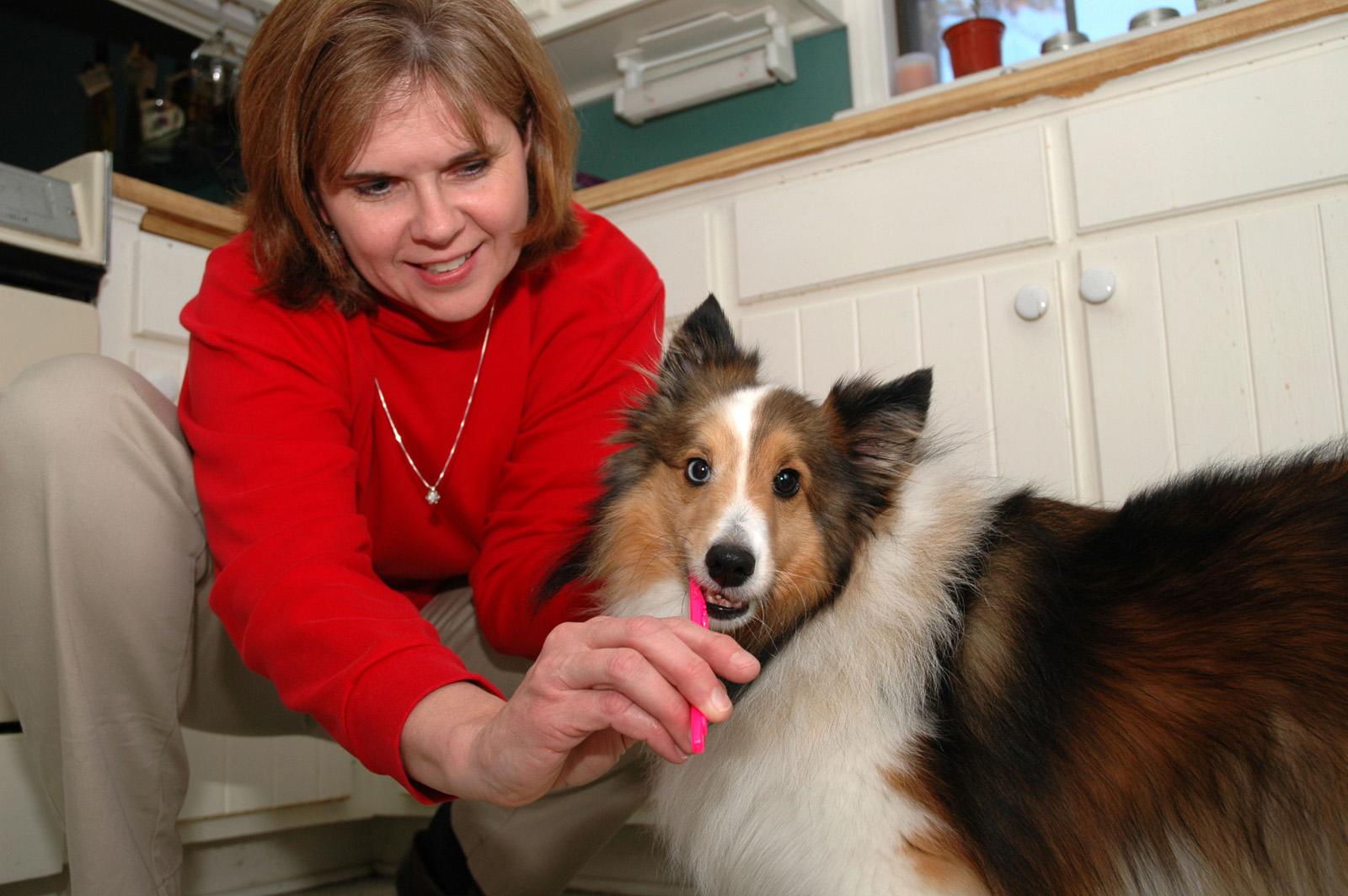Information Possibly Outdated
The information presented on this page was originally released on January 19, 2006. It may not be outdated, but please search our site for more current information. If you plan to quote or reference this information in a publication, please check with the Extension specialist or author before proceeding.
Dental care helps pets live longer, happier lives
MISSISSIPPI STATE -- Brushing a dog's teeth is something most people think is not necessary or even silly, but Susan Seal has good reason to be aware of her pet's dental health.
“When I was growing up, my grandparents had a poodle with health problems related to gum disease,” Seal said. “Taking care of his teeth could have helped him live a longer, healthier life.”
Sadie, Seal's 2-year-old Shetland sheep dog, is benefiting from those childhood memories. The Starkville resident brushes Sadie's teeth two or three times a week.
“It only takes about 5 minutes, and Sadie kind of likes it,” she said. “Her toothpaste is made just for dogs and is poultry flavored.”
Dogs, cats and other pets can have the same dental problems as people, said Dr. Diana Eubanks at Mississippi State University's College of Veterinary Medicine.
“Dogs and other animals develop plaque and film that contain bacteria,” she said. “As a result, periodontal disease is the No. 1 disease you see in pets. Any pet over about 3 years of age that has not had some significant routine oral health care will develop gum disease.”
Left untreated, gum disease in dogs and other pets can lead to heart disease, kidney disease and other health problems. Some routine care, Eubanks said, can save a pet owner money in the long run and their pet unnecessary pain.
“Brushing a dog's teeth two to three times a week with a veterinary toothpaste will help promote good dental health,” she said. “Using human toothpaste can upset a dog's stomach, and they hate the taste.”
Many people consider rawhide chews and hard dog food all the dental care their dogs need.
“Anything that removes plaque as they bite down will help,” Eubanks said. “Certainly diet and plaque-removing treats are part of a dental health program, but as pets live longer and become more bonded with their owners, professional dental care becomes more important.”
In fact, dental care is the fastest growing specialty in veterinary medicine, and MSU's College of Veterinary Medicine is one of the few schools in the South providing significant hands-on experience in the field.
“We have a dental X-ray unit and usually do an average of three procedures a week,” Eubanks said. “We also offer continuing education classes in veterinary dentistry for our graduates because it is becoming an important part of veterinary practices.”
Dr. Bill Nalley is a graduate of MSU's College of Veterinary Medicine practicing veterinary dentistry in Long Beach. Dogs and cats, he said, are not supposed to have bad breath, which is one of a number of signs of periodontal disease.
“My clinical experience has shown me that many dogs and cats suffering from advanced periodontal disease also will appear lethargic, not respond eagerly to play, seem depressed, not eat well, and may have symptoms of heart, liver or kidney disease,” Nalley said.
Part of the treatment for gum disease is a prophylaxis, a procedure to remove plaque and clean the teeth.
“Clients often call me two weeks after a prophylaxis and are jubilant that their pet is acting like a 2-year-old again,” he said.
Nalley agreed that brushing their teeth is an important part of keeping a pet in top physical shape.
“Dogs, cats and ferrets benefit greatly from daily brushing of their teeth,” he said. “There are products on the market that claim their use will reduce or eliminate the need for brushing. I agree that some of these products will aid in keeping pets teeth free of plaque, but none of them will totally replace brushing.”
Contact: Dr. Diana Eubanks, (662) 325-1435



